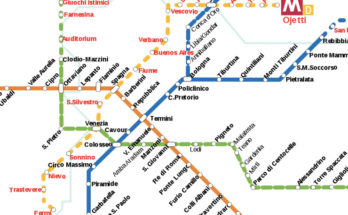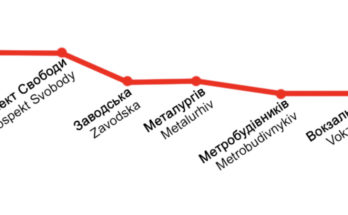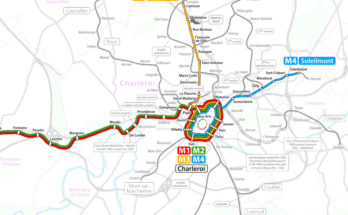Baku is the only city in Azerbaijan with a rapid transit system. In addition to the metro, the public transport system in Baku also has buses, trams and trolleybuses. The Baku Metro is very affordable system which contrasts with the magnificent soviet style of their stations.
Baku Metro is one of the oldest in the USSR. Although the first project for the Baku Metro was designed in the 30s (Master Plan 1932)
it is not until 1967 when metro starts operating (first phase). Its construction began in the 60s and was intended to connect the center with the other areas.
The planning and construction of this system has a very changing history. This network has been evolving since the inauguration of its first section
in November of 1967 with 5 stations and 6.5 kms in length between Baki Soveti and Narimanov to the current state (2011) , with 2 lines and a total length of 34.6 km and 23 stations. This situation is far from the plans of the 70s in which it aimed to reach 52kms and 33 stations for 2000.
In 2010 a new expansion plan aims to extend Baku metro network to 119kms of tracks and 76 stations in 2040.
There will be links to the bus network and airport. There is also a third planned line.
- Opening: November 1967
- Owner: Bakı Metropoliteni
- Number of lines: 2
- Number of stations: 23
- Network length: 34,6 km
- Passengers/day: 1.8M
- Web
Baku metro lines and stations
The total length of Baku subway system is 34.6 km. It has 2 lines and 23 stations. The system circulates sometimes deep and some others surface level.
- Line 1 (Red). Goes from İçərişəhər to Həzi Aslanov. It was the first section opened in 1967. Total length is 20.1 km. 13 stations.
- Line 2 (Green). Links Şah İsmail Xətai to Dərnəgül. It was opened later in 1976. Total length is 14.5 km. 10 stations.
Schedule and frequency
Baku Metro hours are from 6:00 to 1:00 although some stations close at 00:30. At peak times there are trains every 1-6 minutes. Rest time between 4 and 15 minutes.
Fares and tickets
Baku metro rates are very affordable.
Since 1992 tokens are used to pay. In 2006 they changed tokens to rechargeable RFID cards and now want to change to another type of smart cards (MIFARE). A single rate: 1 way trip costs 20 qapik. Children up to 7 years travel free if accompanied by an adult.
Curious facts
Although it is a fairly safe Metro it has suffered several incidents: 2 bombings attacks and a carbon monoxide poisoning.
There are mobile and wifi coverage in the subway.



